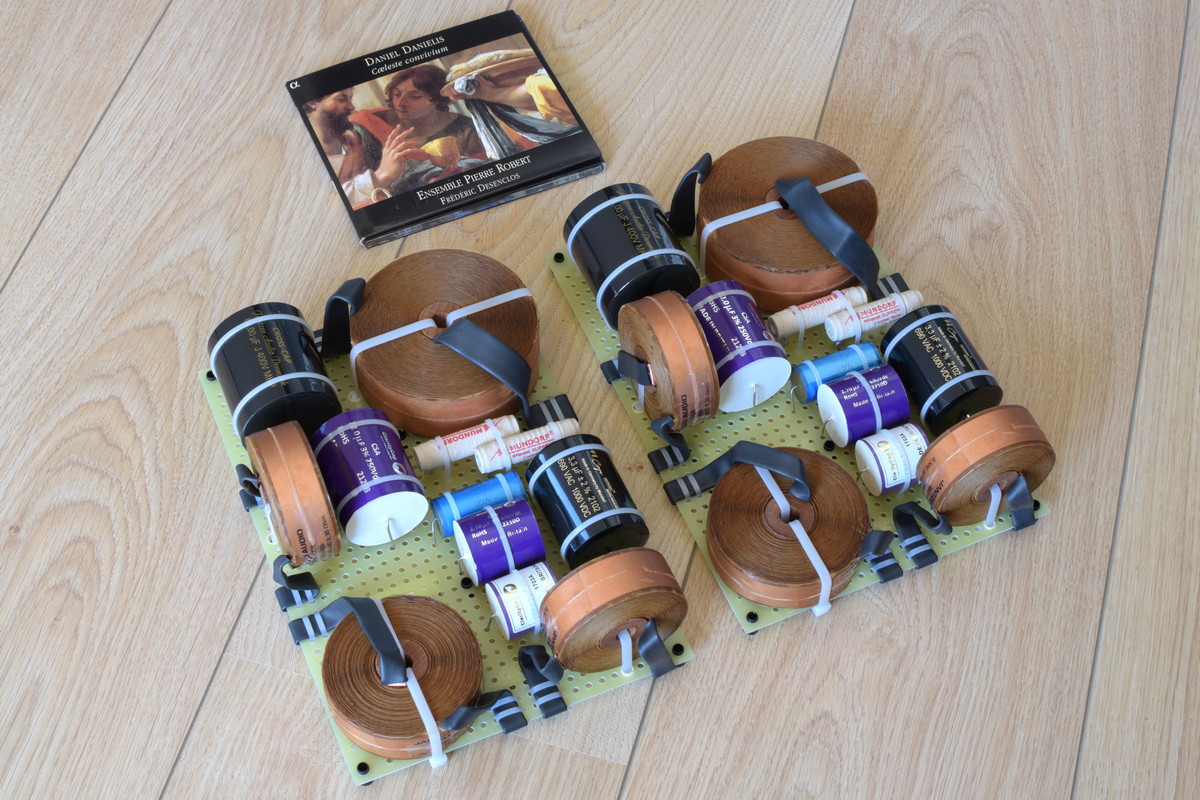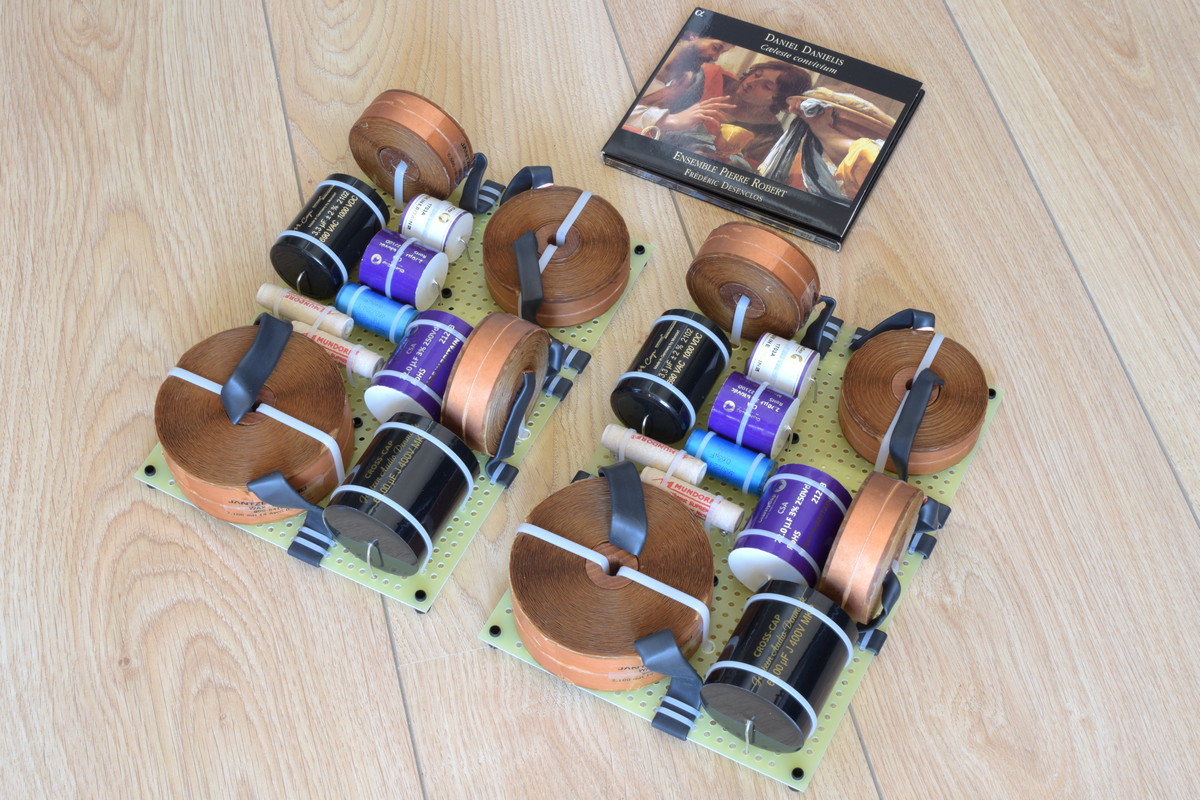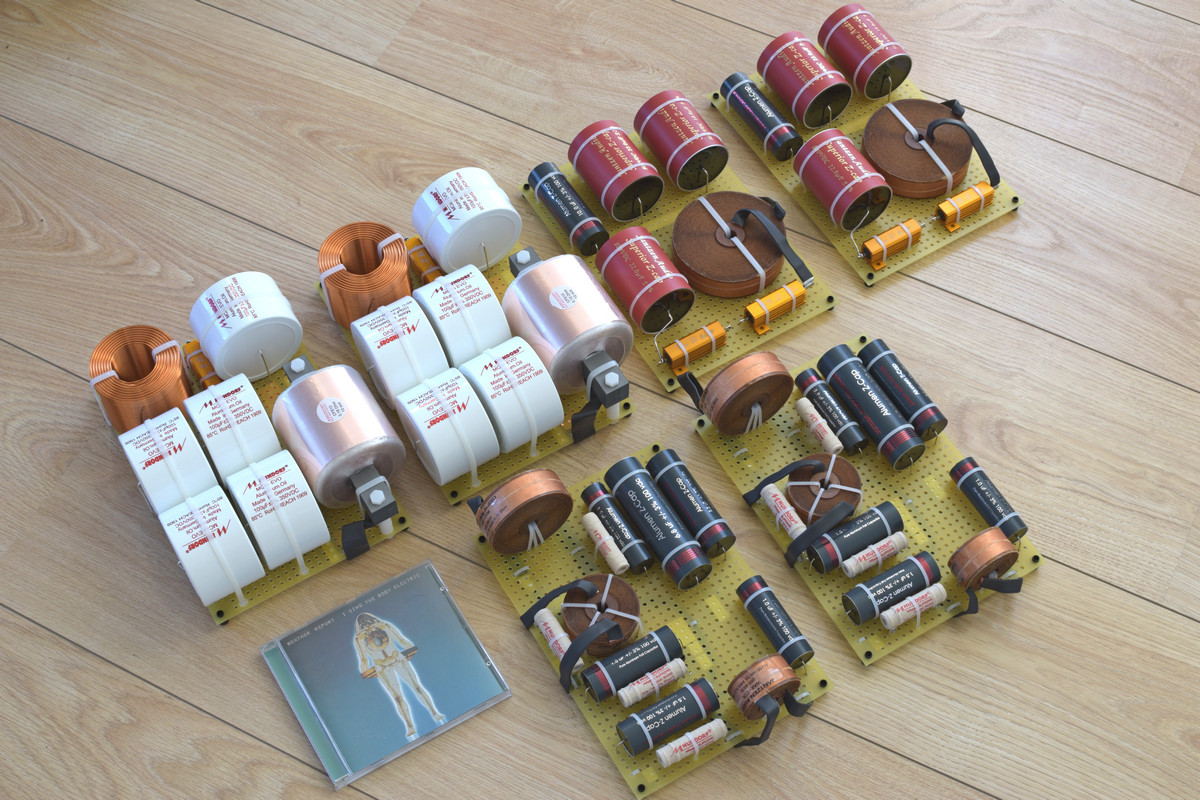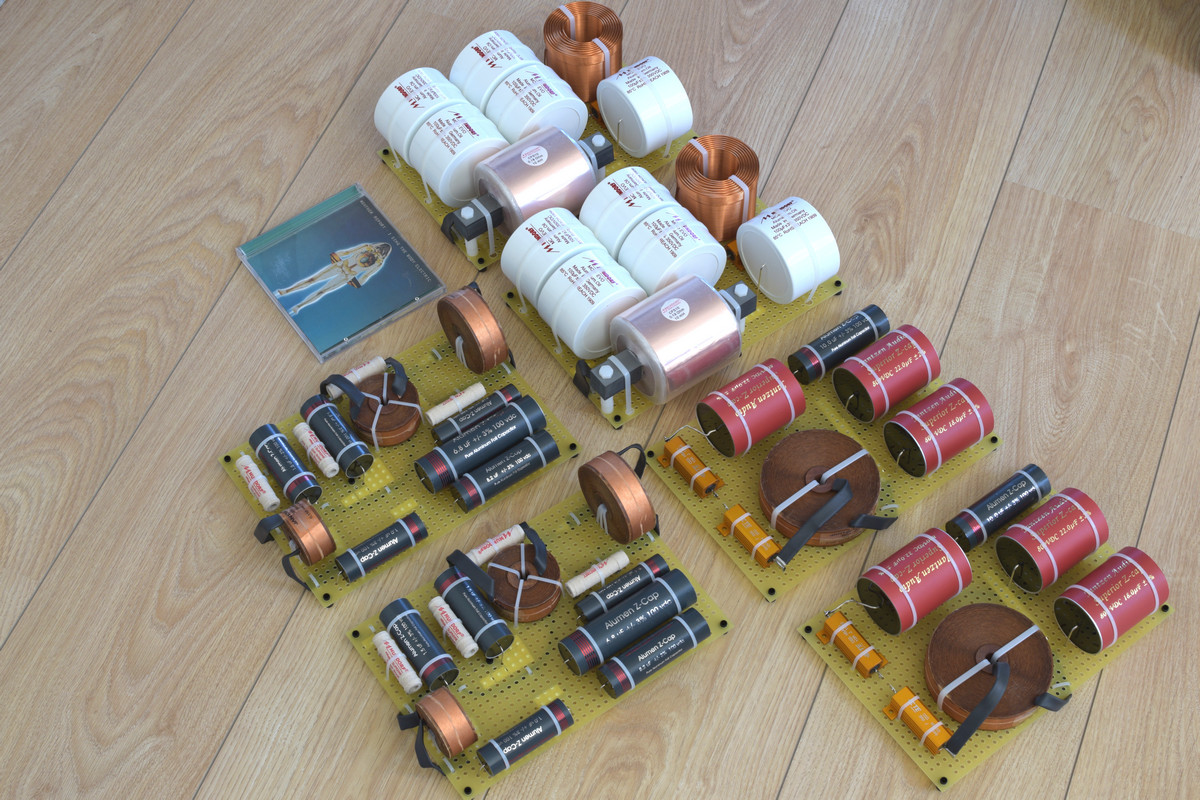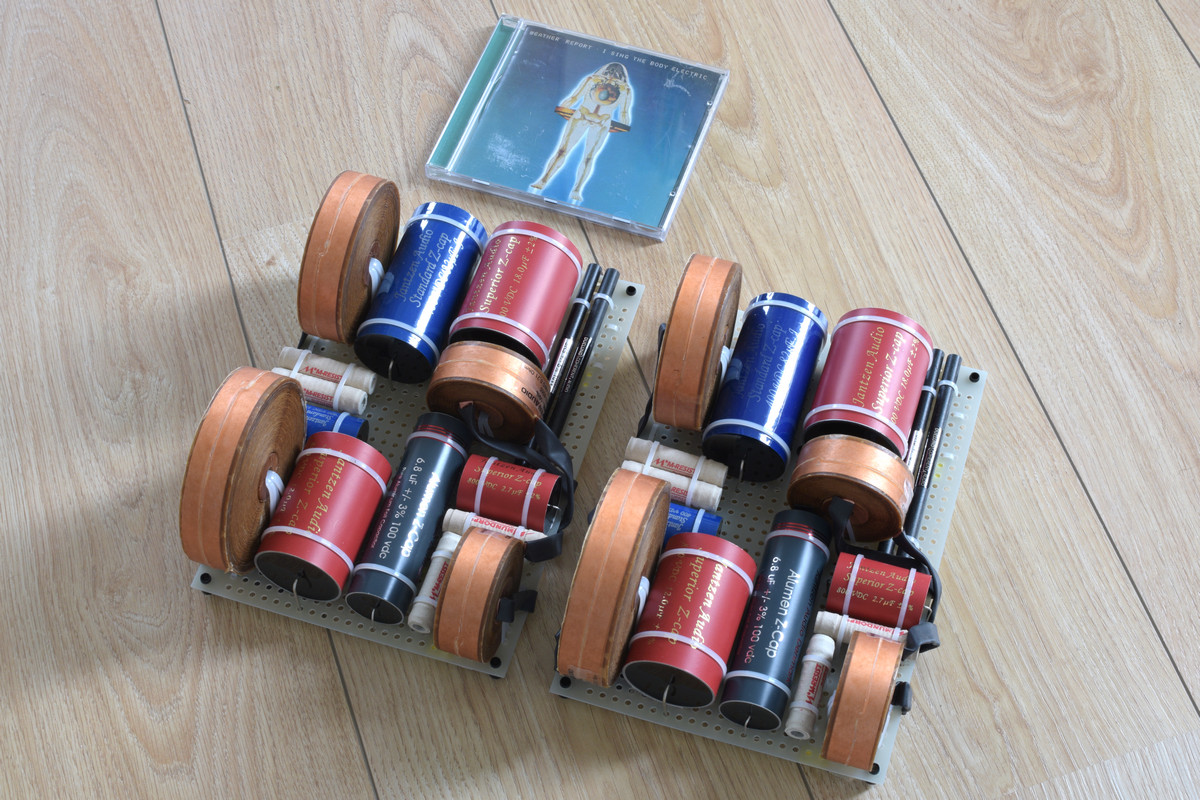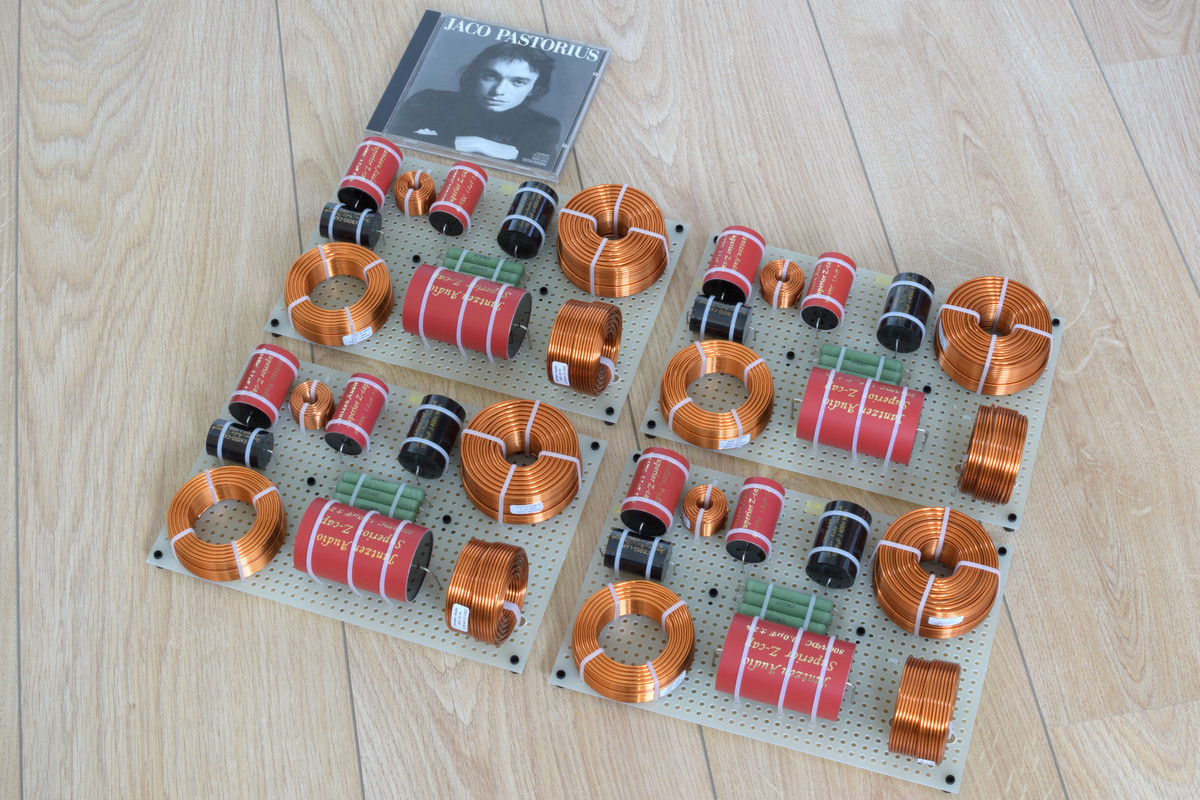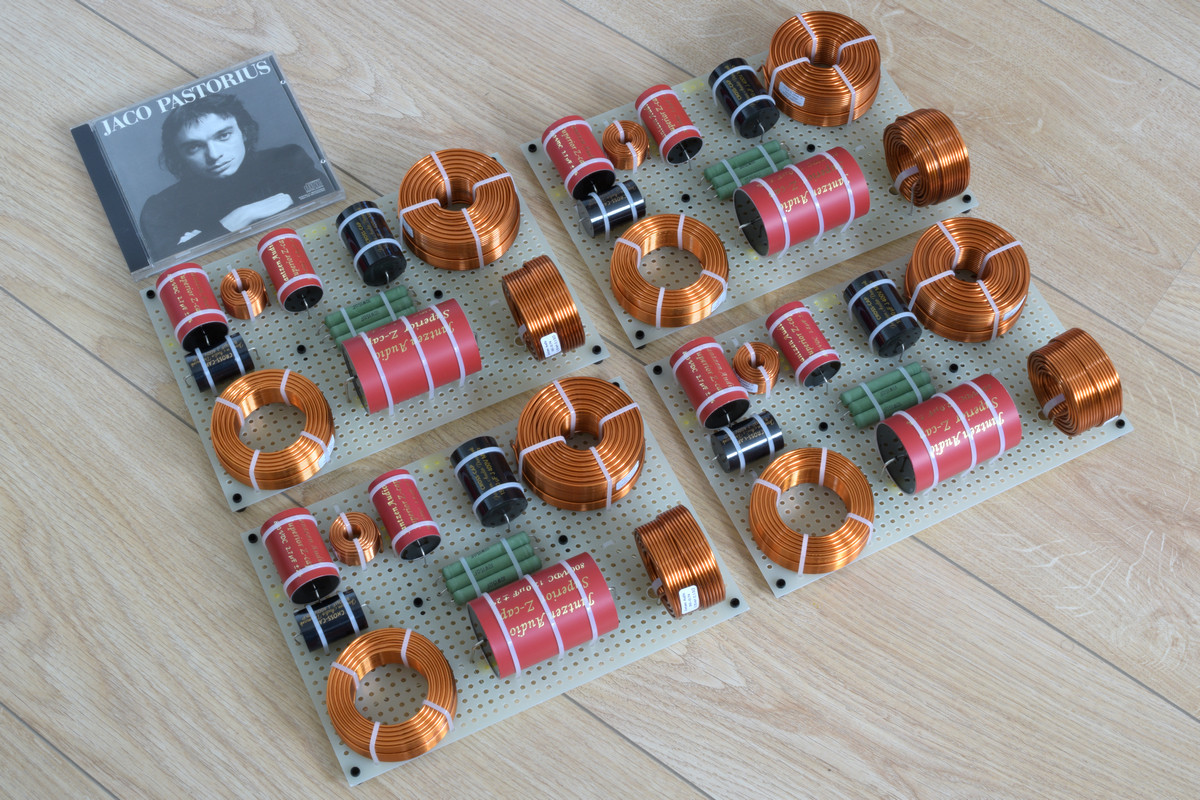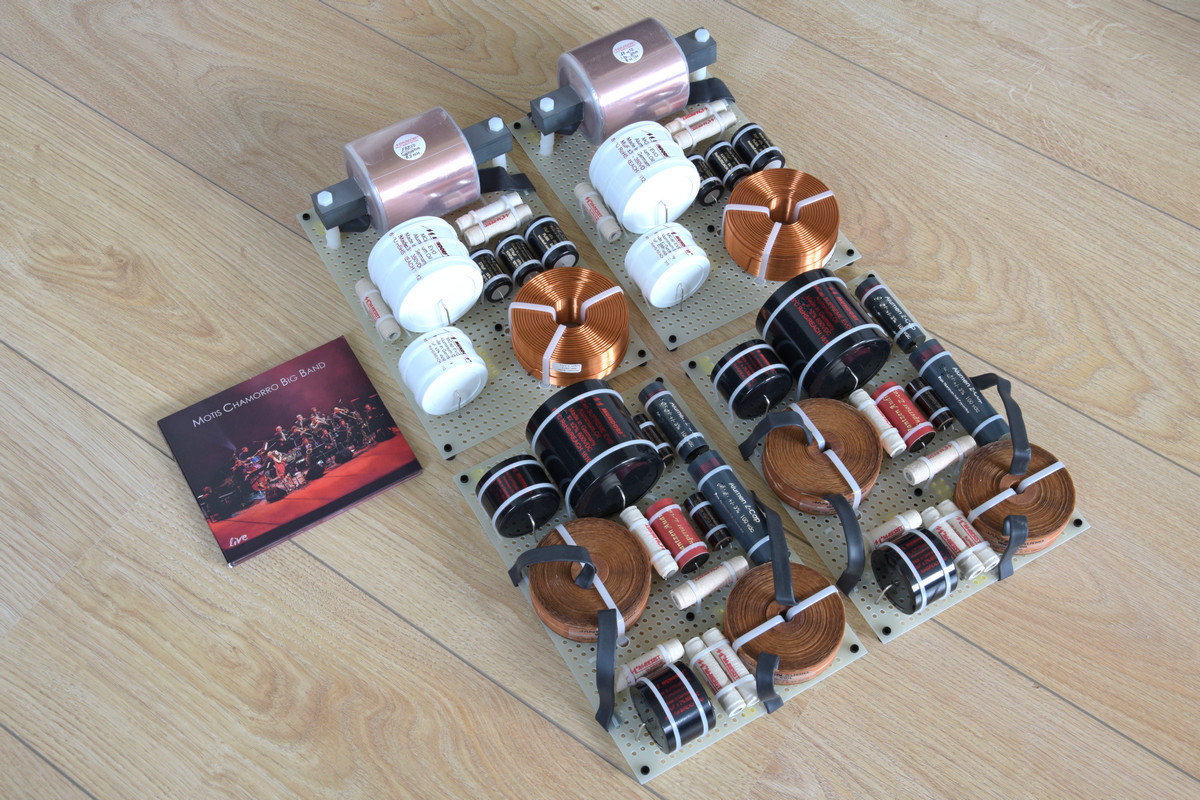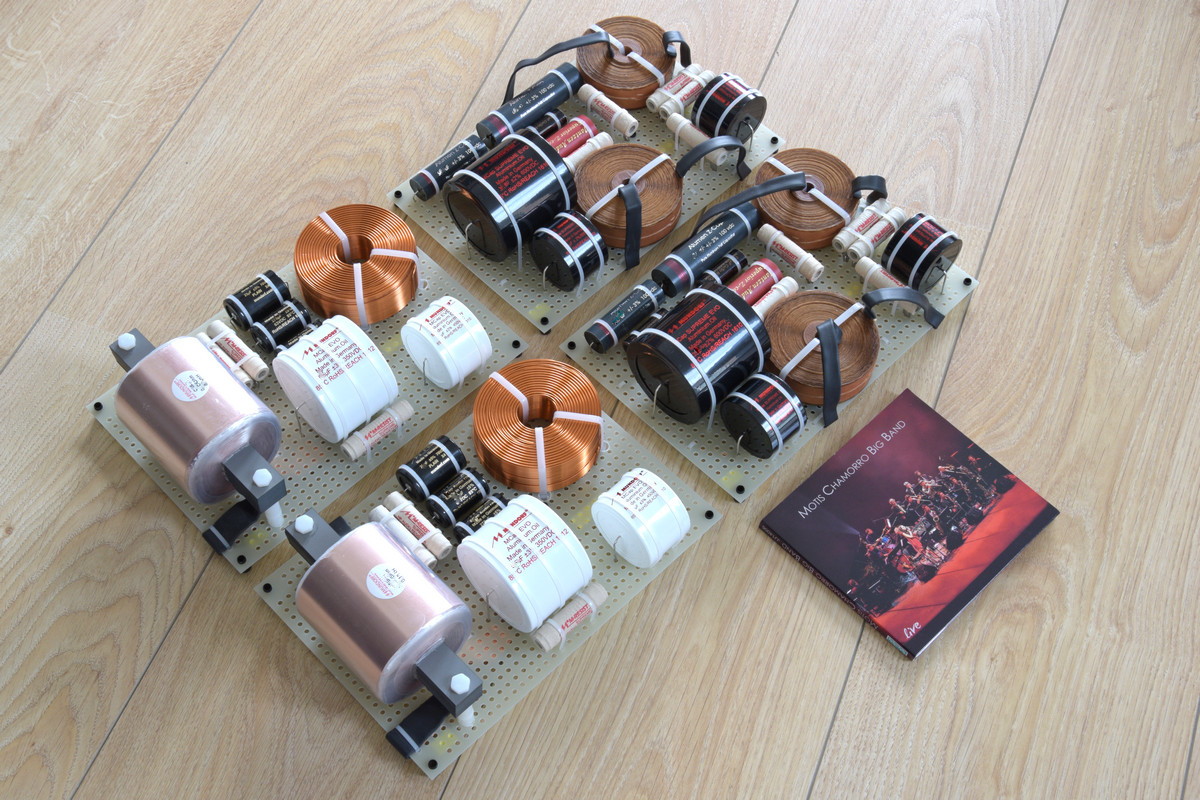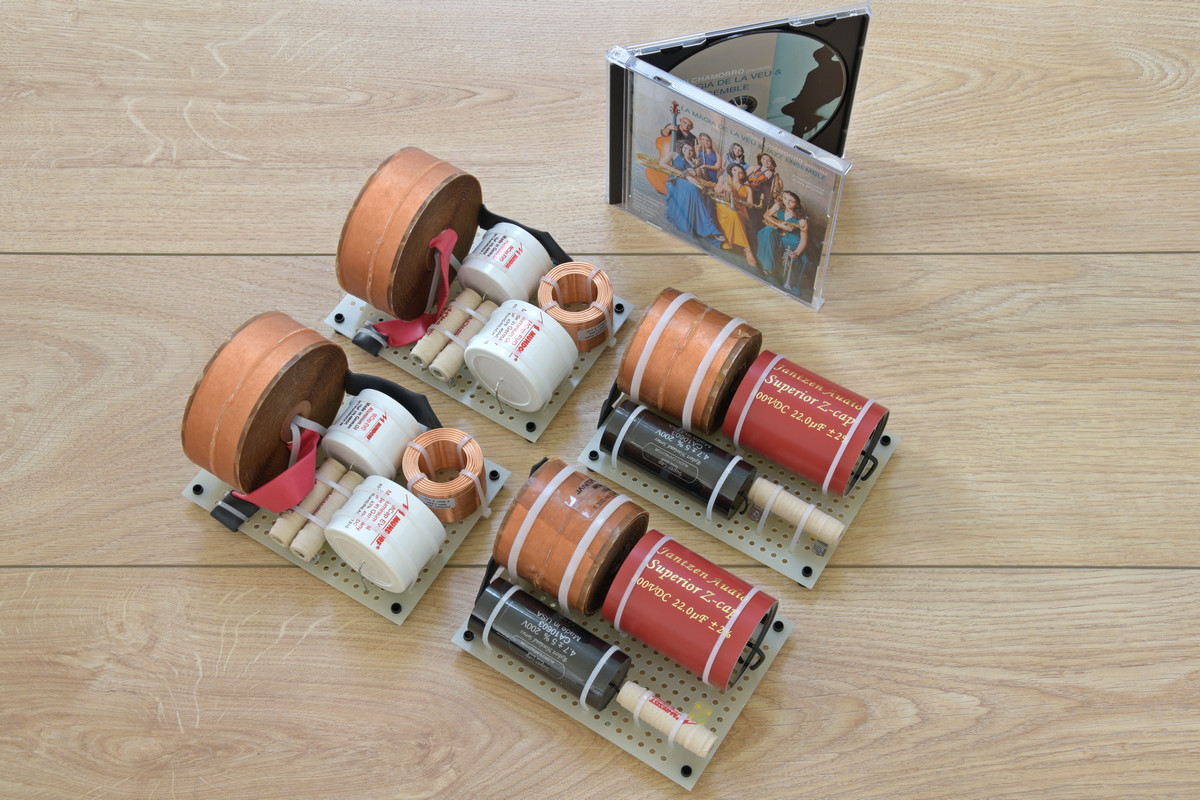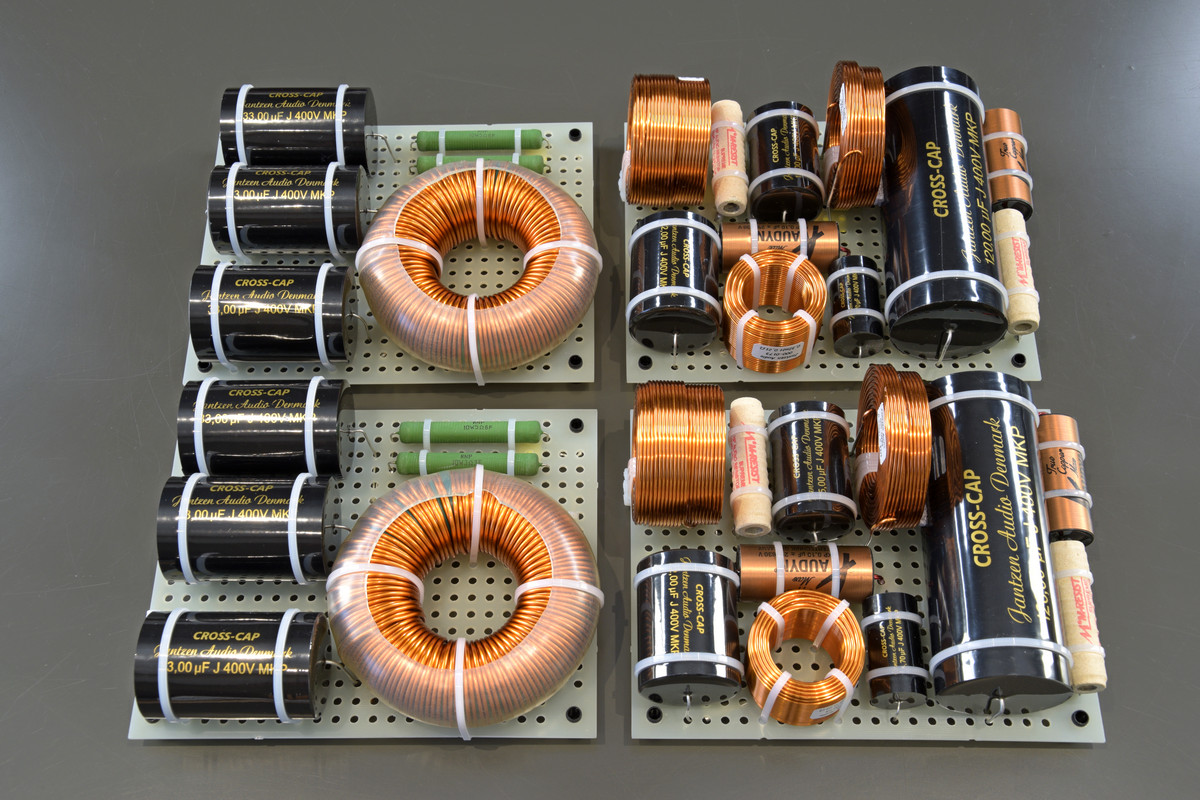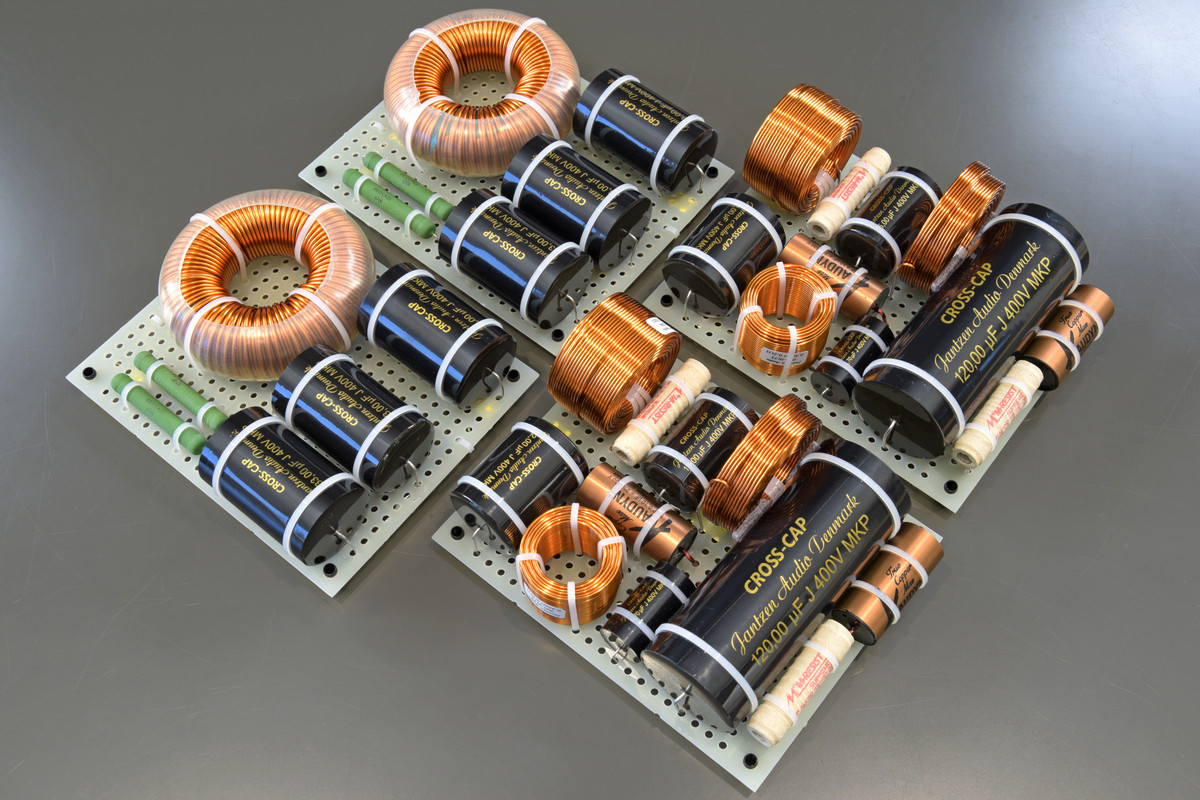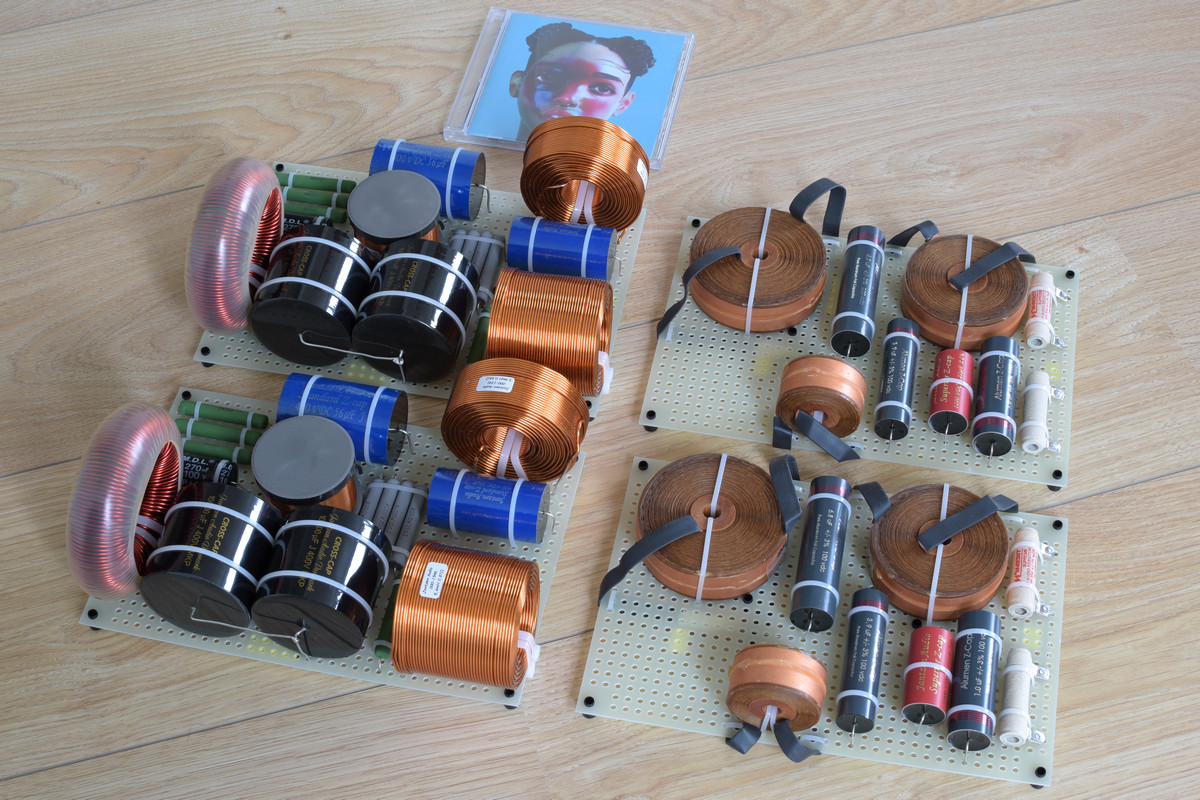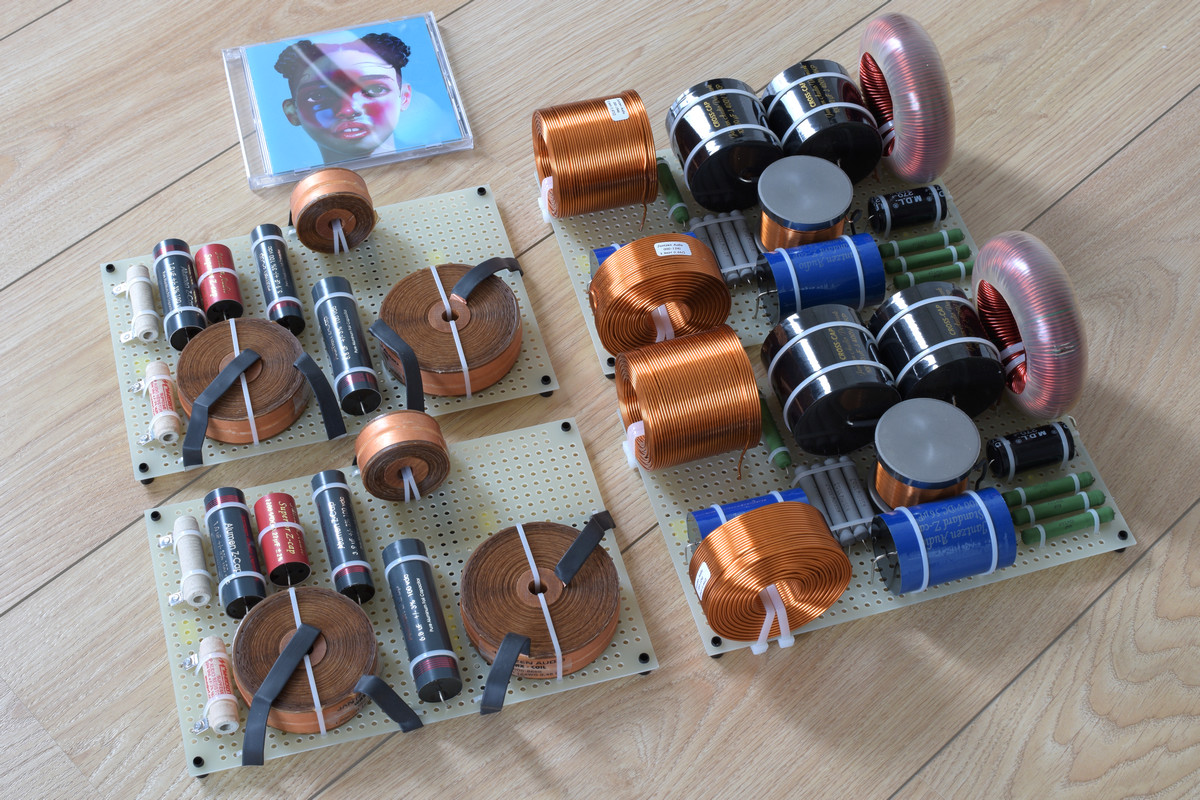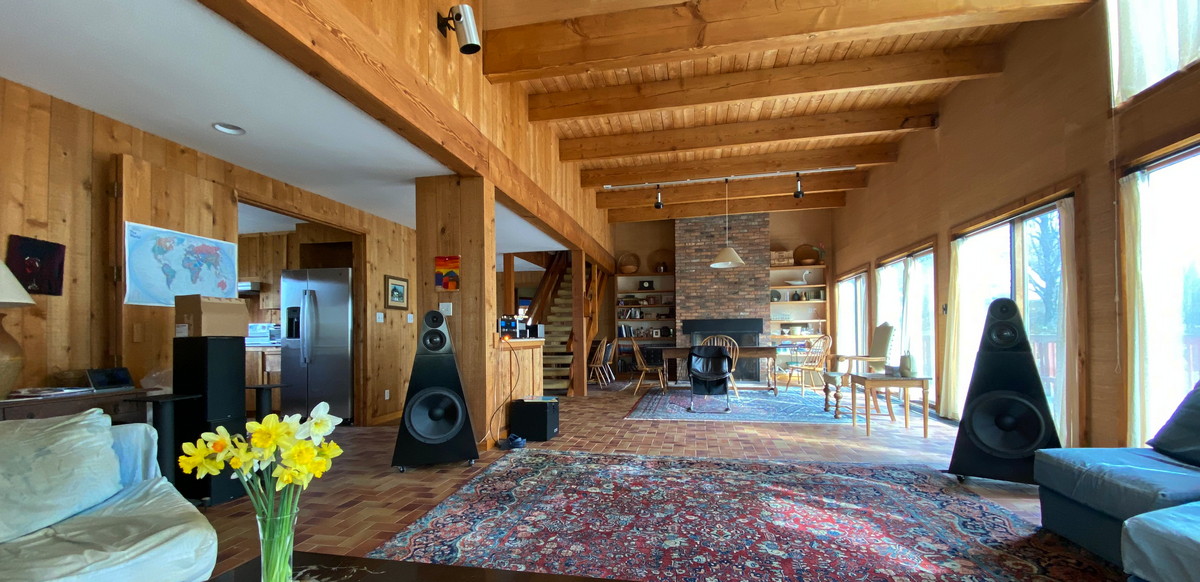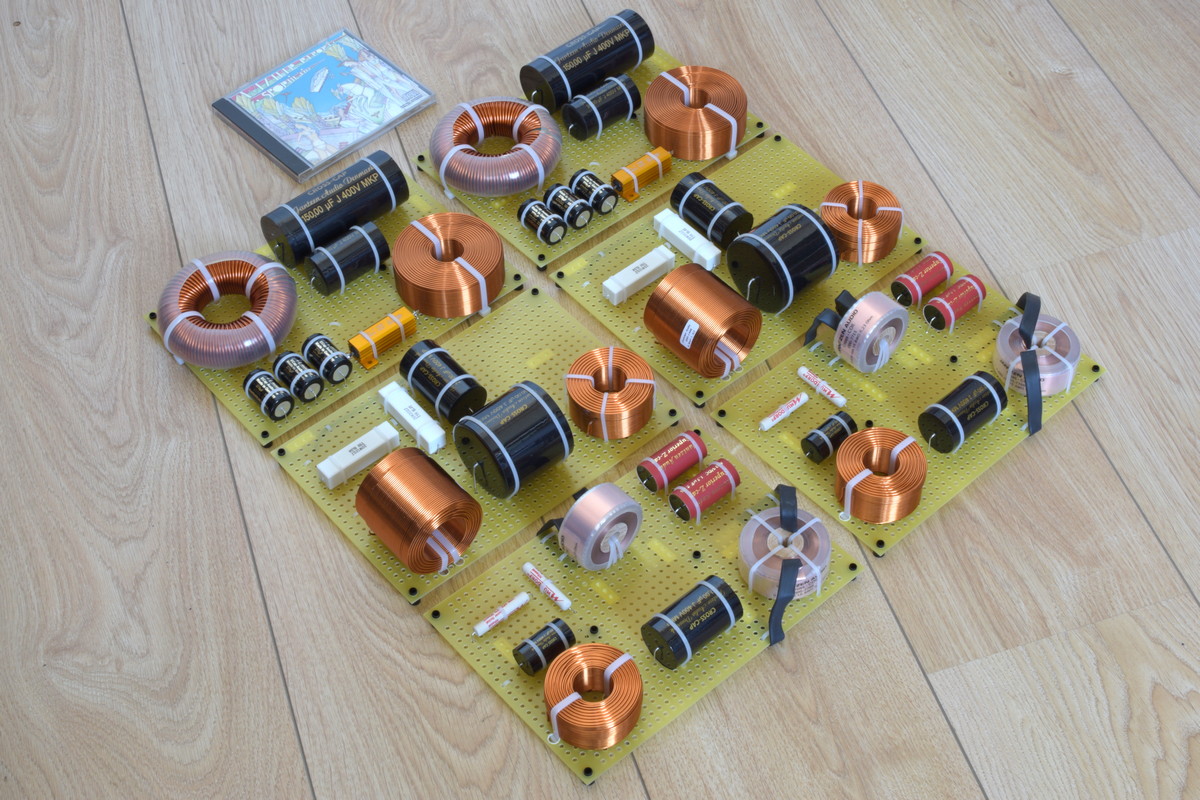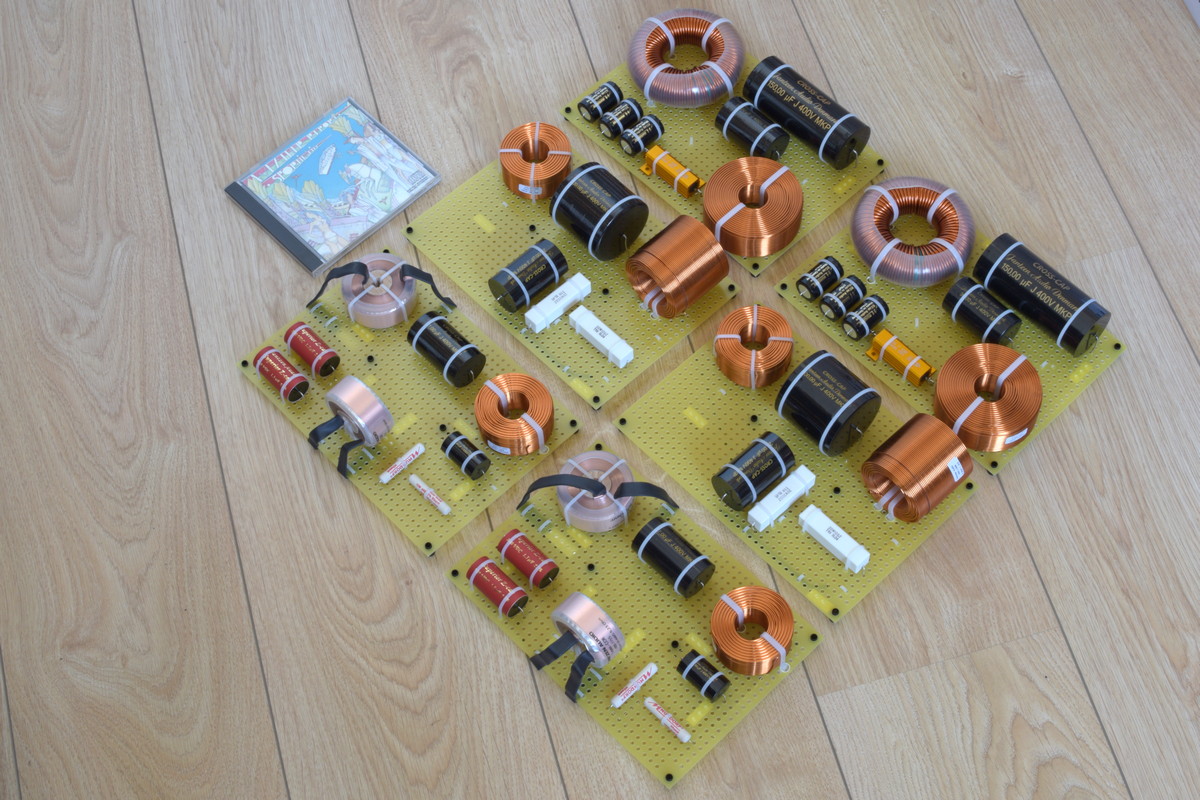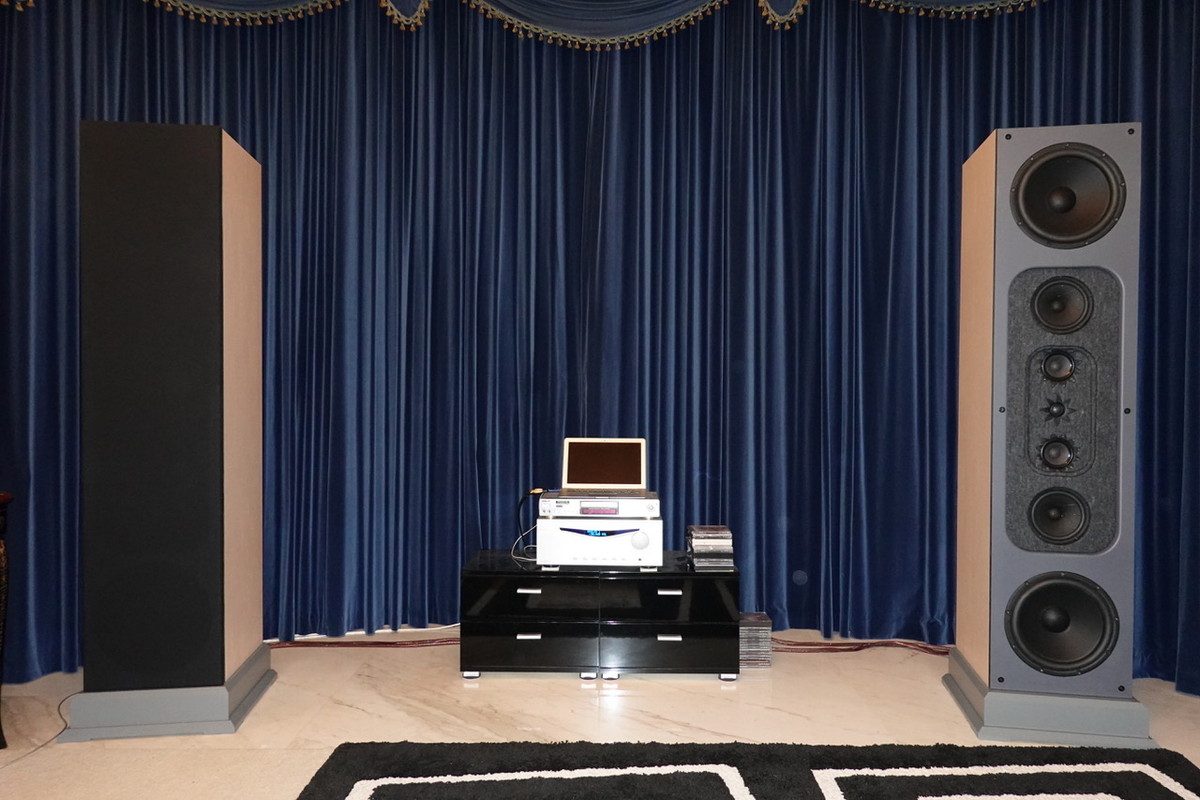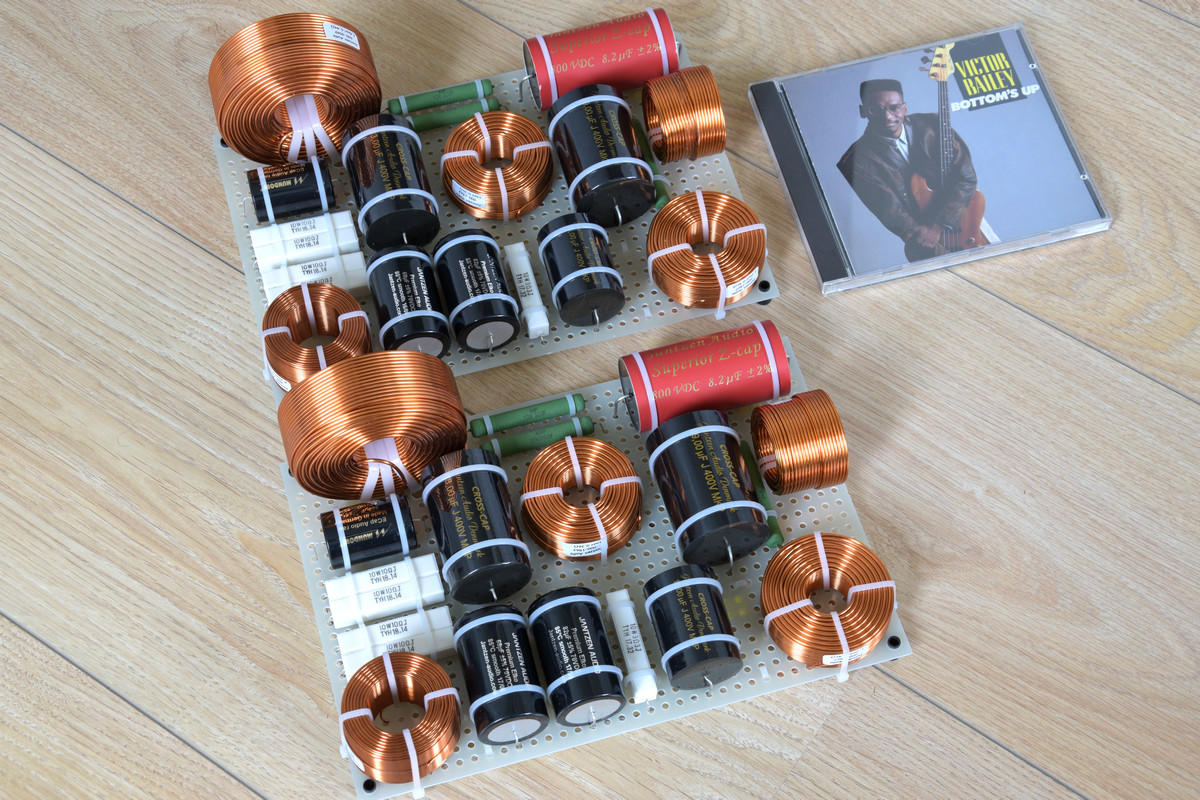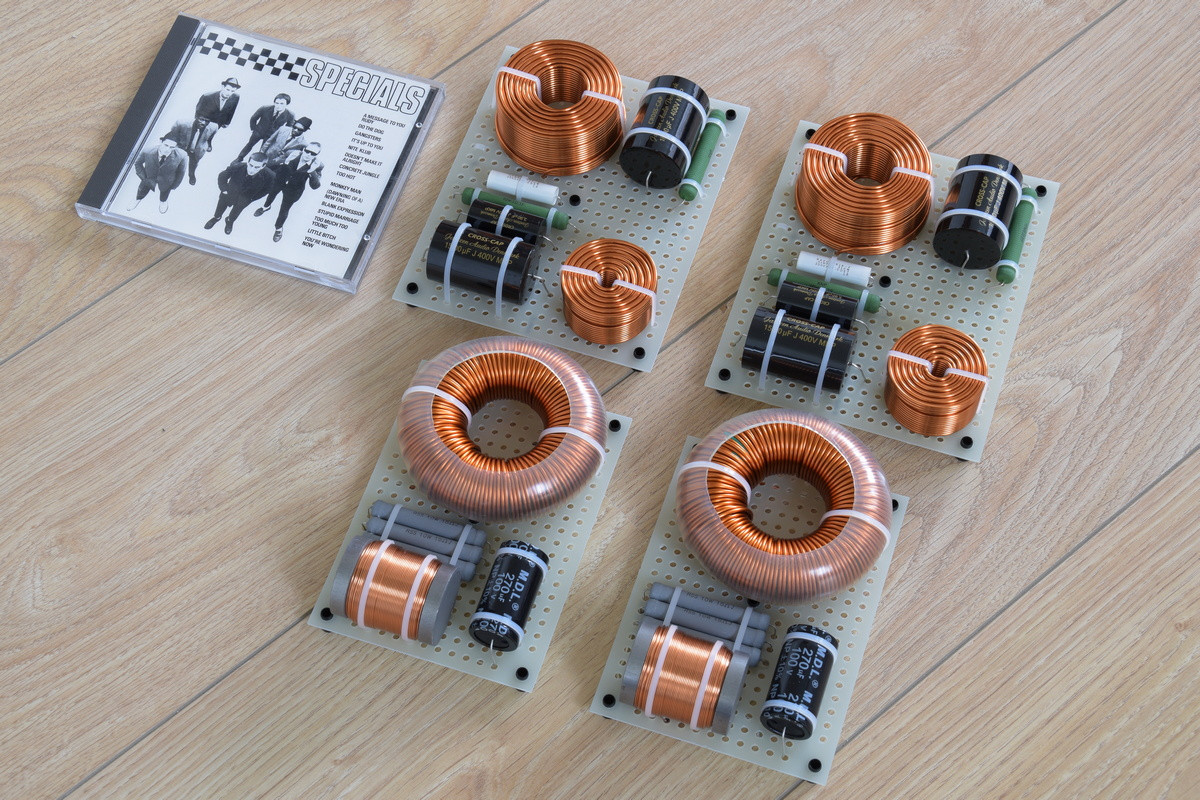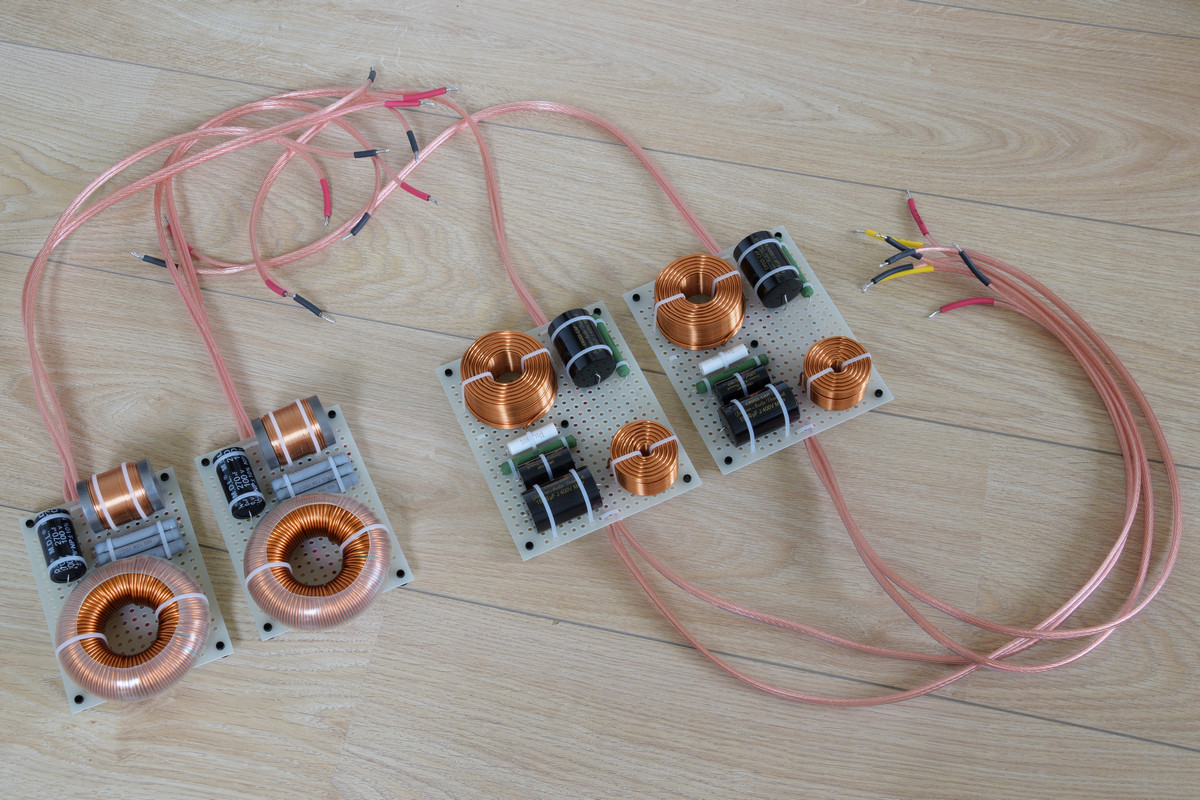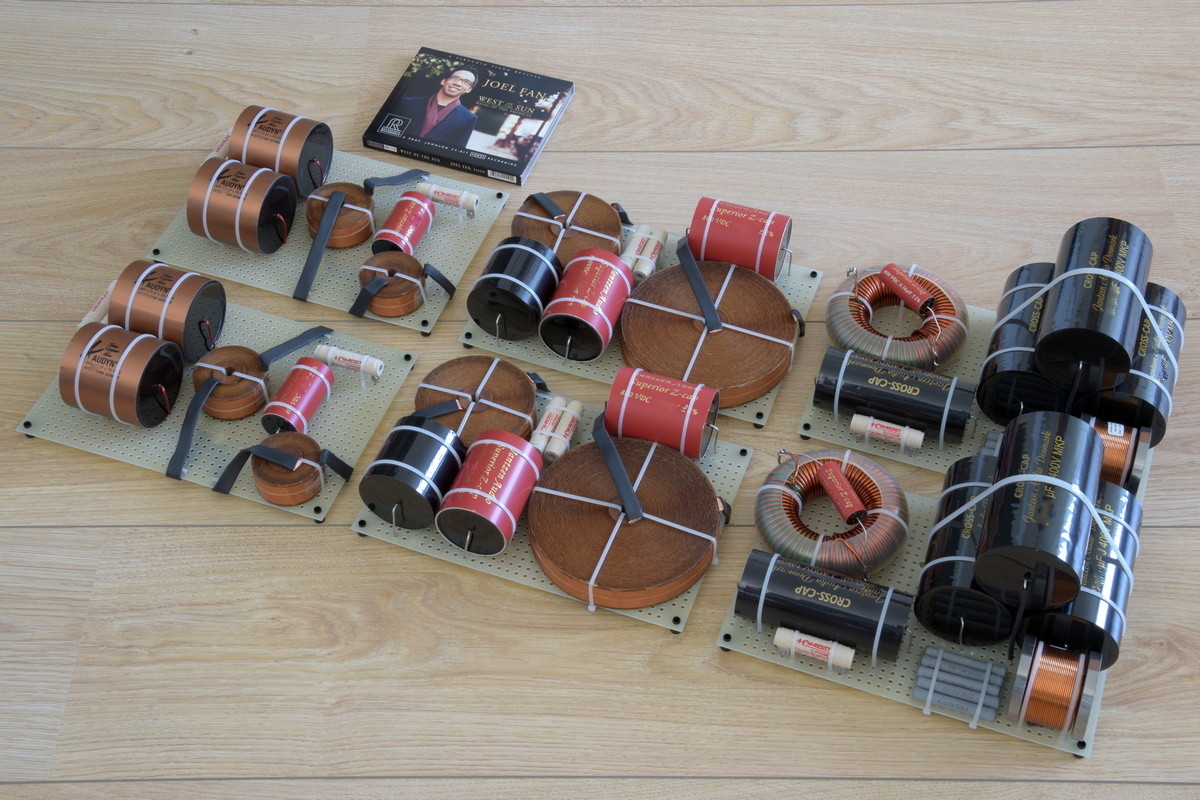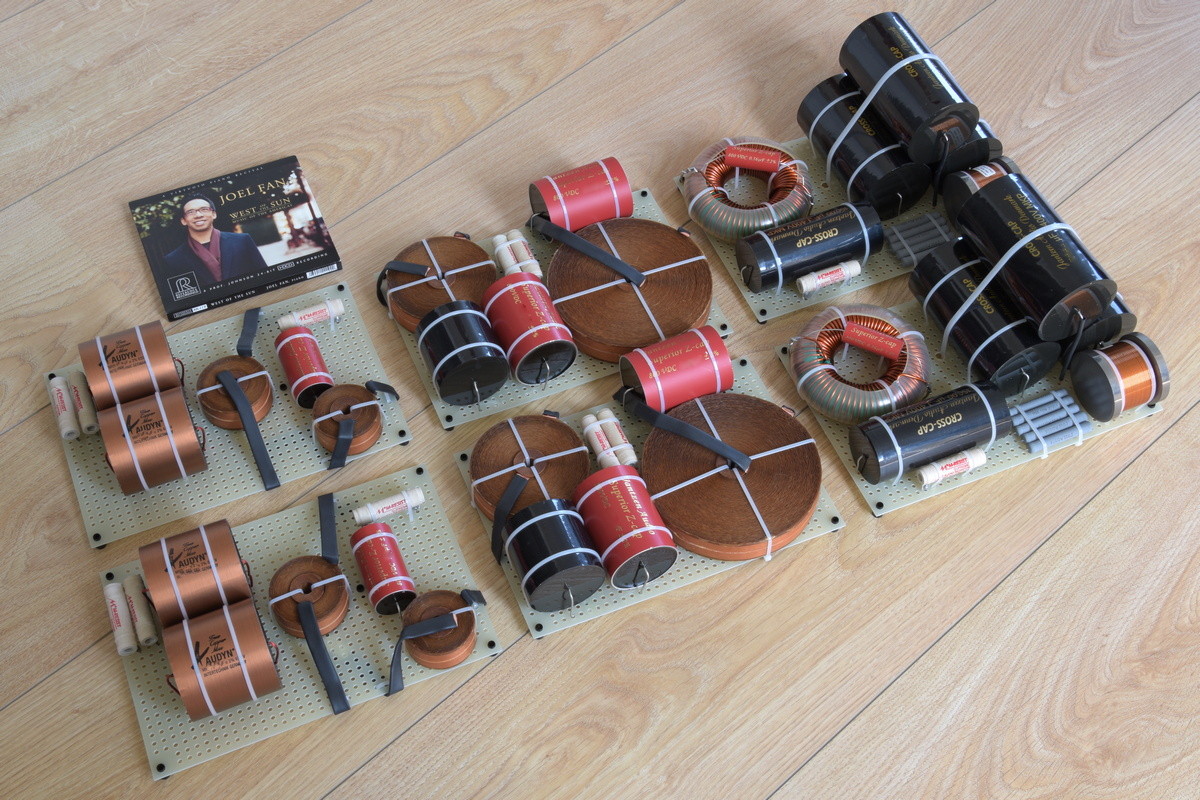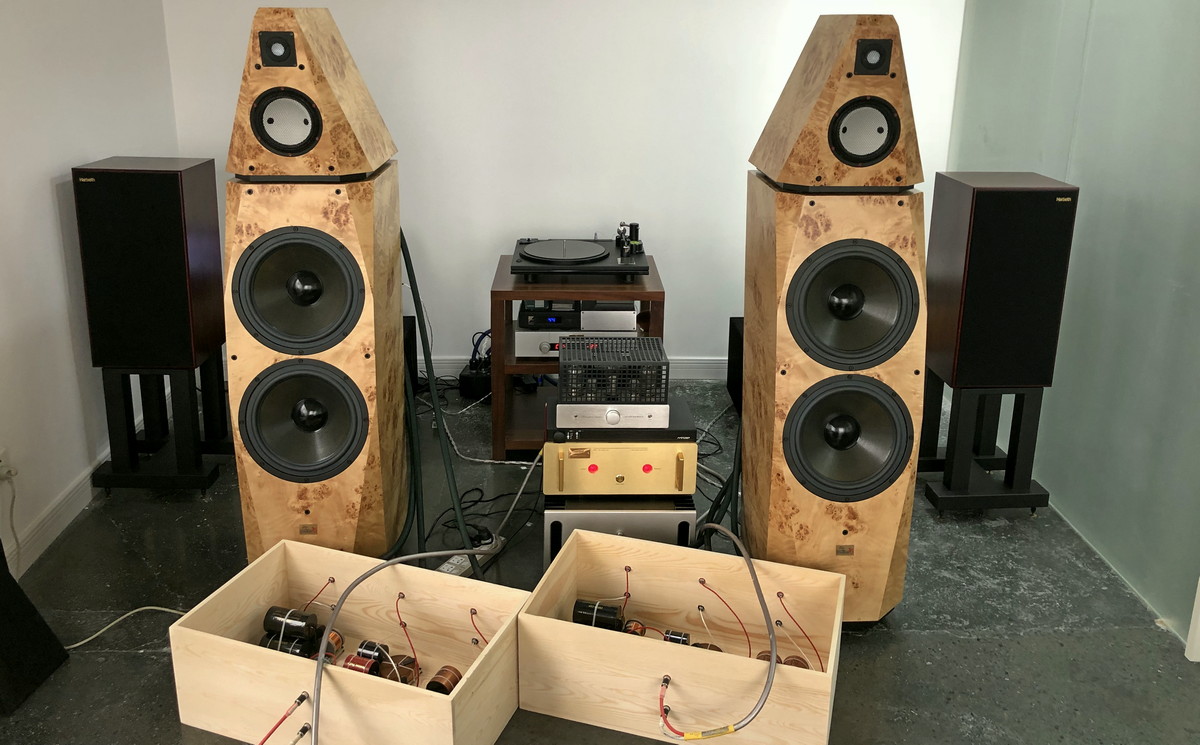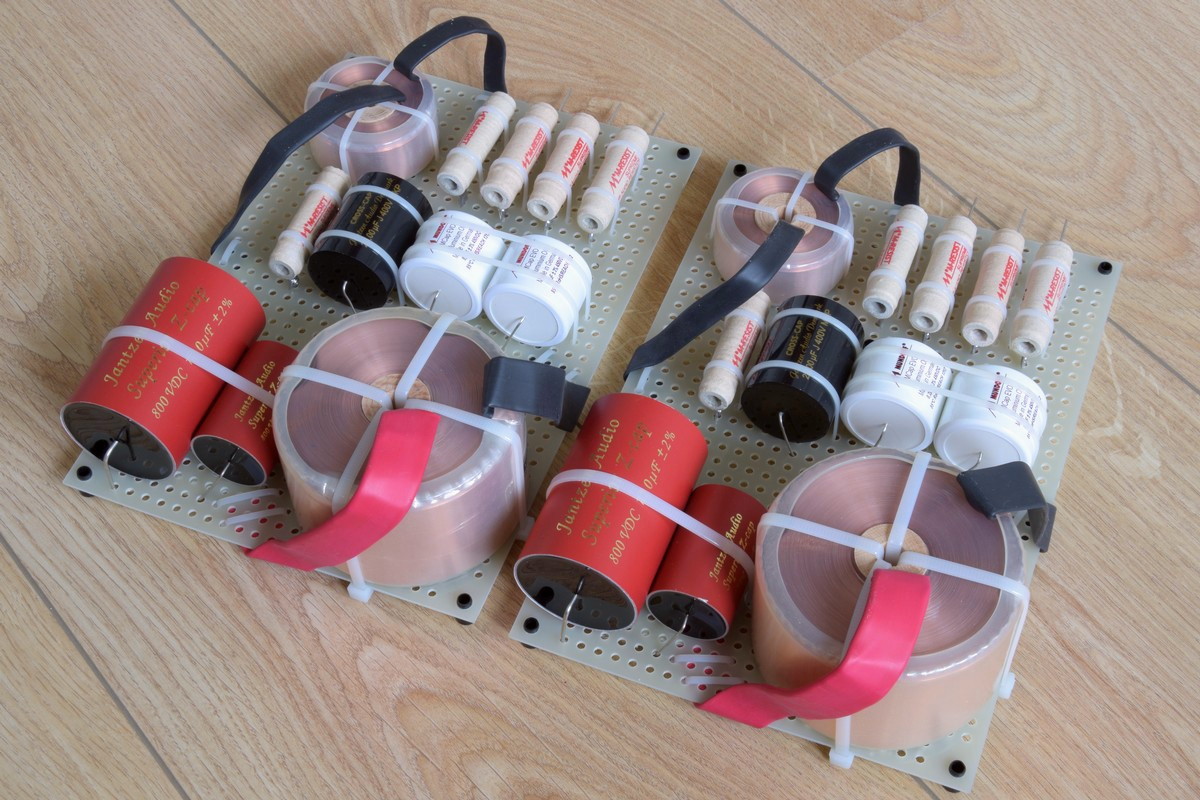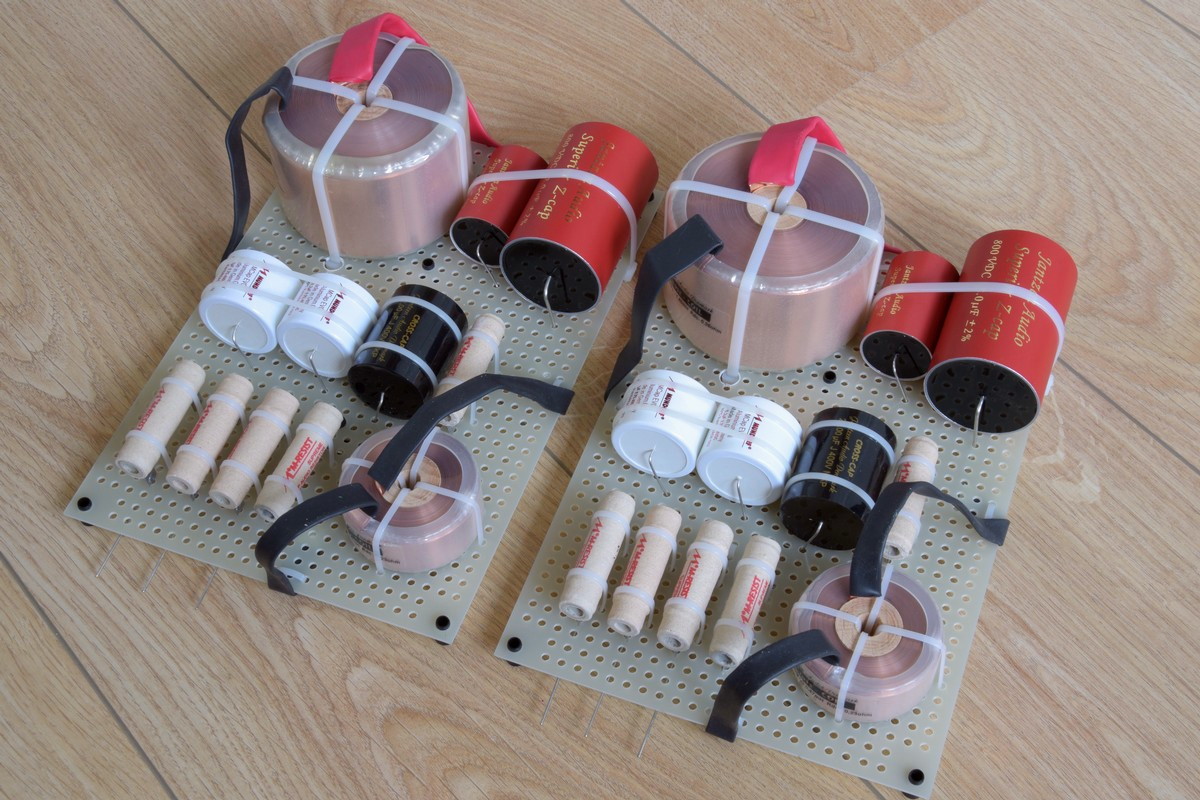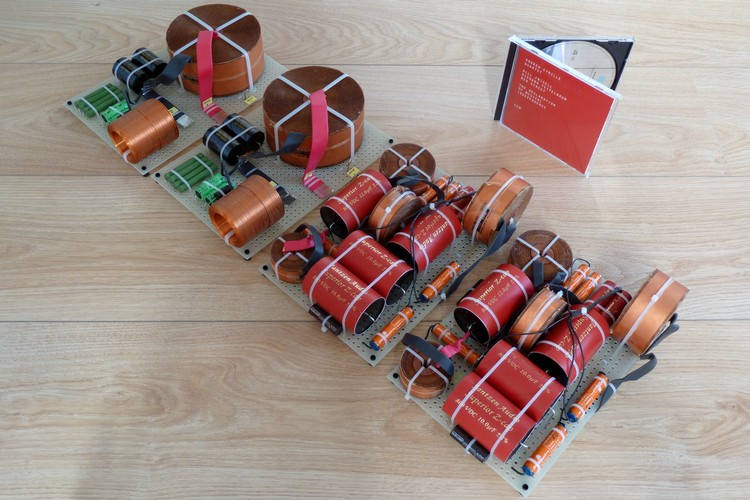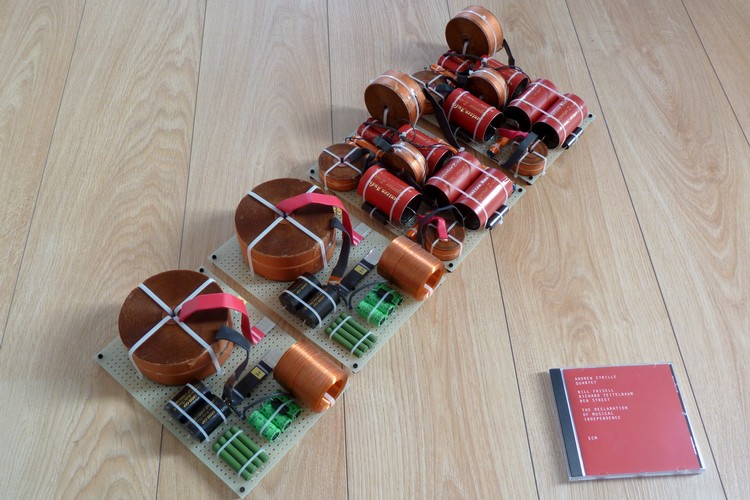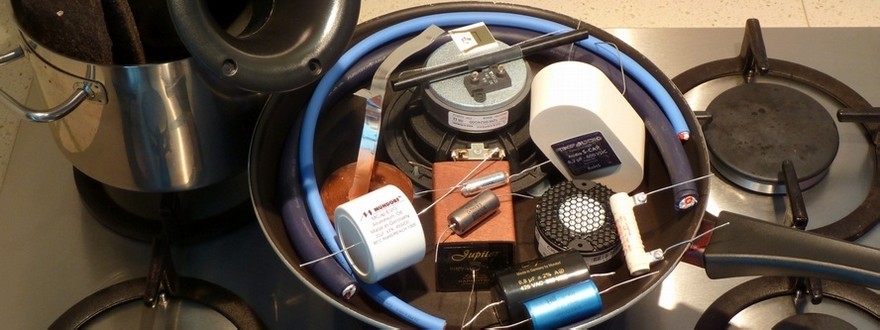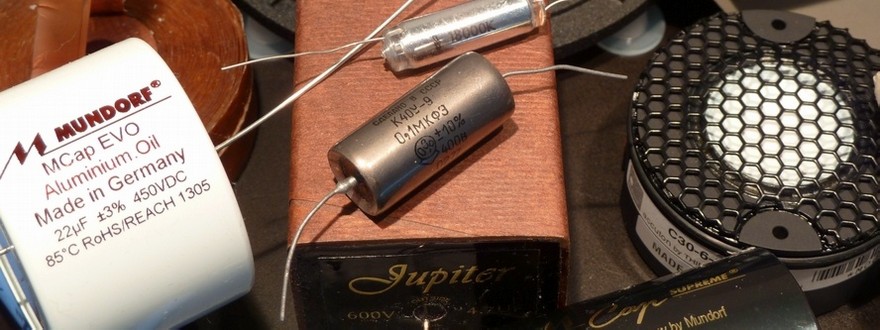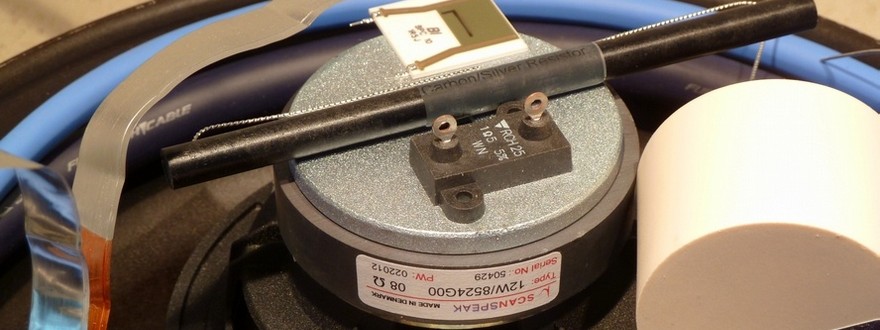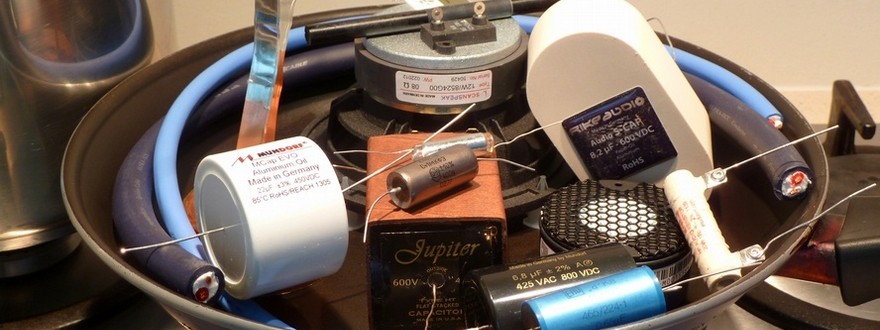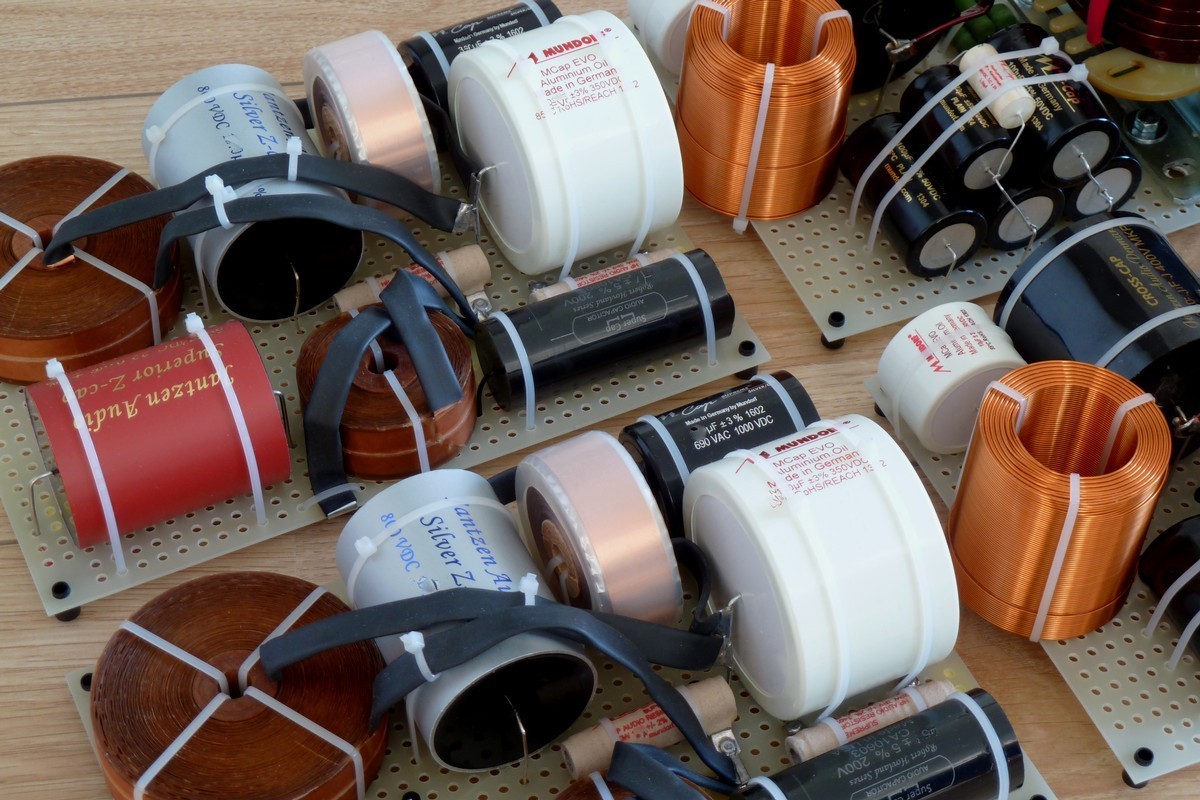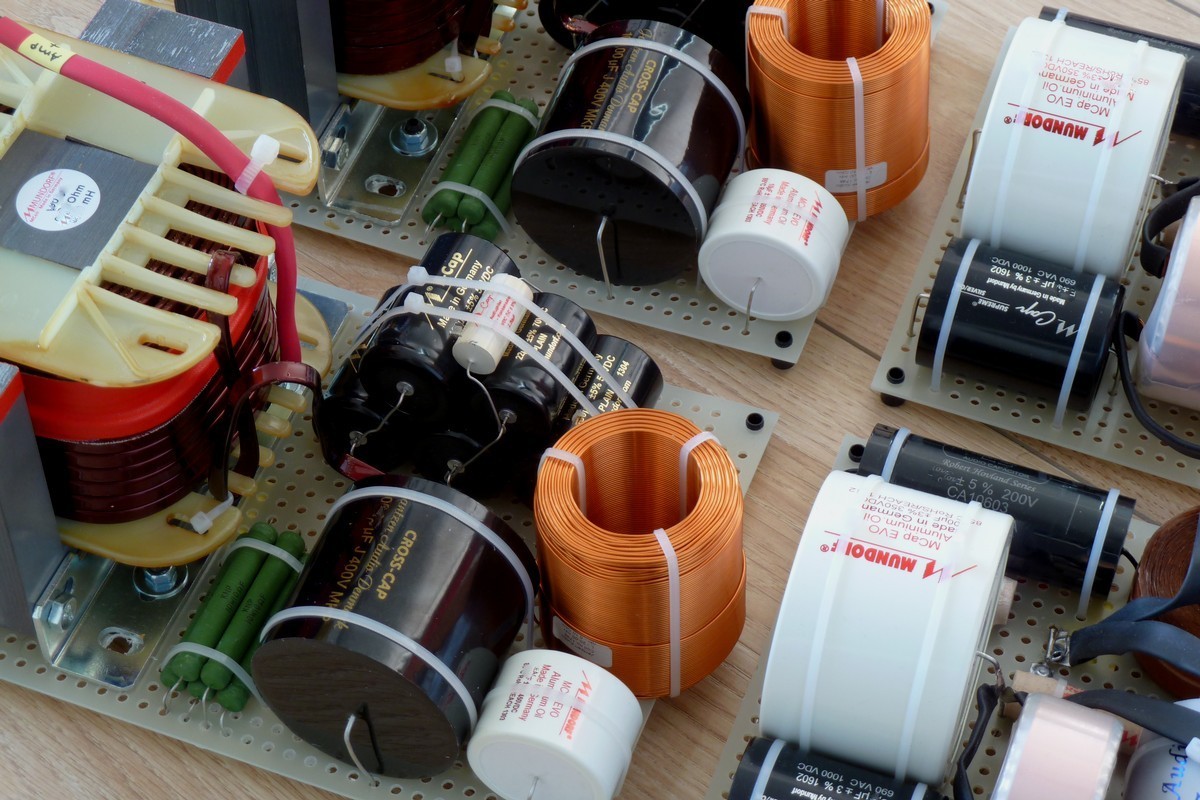|
At Humble Homemade Hifi we offer all stages of design work in regards to loudspeakers crossovers. This can vary from basic simulation only based crossovers to full custom design using real-life measurements. For simulation only based designs we model the drivers and enclosures so that things like edge diffraction, baffle-step losses, time-delay between drivers and port, etc, are taken into account. Impedance curves and frequency curves are then generated using these simulations in combination with extensive real-life data that have been aquired over the years. This results in a schematic with a few options for fine-tuning to personal taste. For this basic crossover design we charge EUR. 150,- excl. VAT. This price is for a design with a maximum of three drivers. For more complex designs a quote will be made. An example of a simulation for a three-way loudspeaker can be downloaded here: loudspeaker-simulation-example.pdf
What our customers say ...........
"Hi Tony, I assembled the speakers with your crossovers and have evaluated the result. The sound is Great! As you can see from the picture, it is in a large room, and the speakers have no problem filling the room with authority. The bass is polychromatic and has good deep extension. The Morel mid is extremely clean, and has the most realistic reproduction of singing voice I have heard. The speakers have remarkable attack on things like strong rim whacks and other high energy impulses. Your crossover ties everything together seamlessly. Haven't needed any bass boost, surprising for a sealed cabinet. I did my 'blow up' test playing the beginning of Dark Side of the Moon at 100 watts peaking at 300 watts. No smoke, so it seems the electrolytic caps are holding up. Many thanks. Hope to work with you again." (Jim, New Hampshire, United States of America - custom crossover design and build)
"Hi Tony, They sound absolutely fantastic!! Perfectly balanced. Very smooth, controlled, and warm. With my last setup most digital music sounded harsh and poor in comparison to records and now compact discs are right there! Thanks so much for your beautiful work and guidance." (Will, New York, United States of America - custom crossover design and build)
"I finally finished rebuilding my speakers together with your crossovers. Took me a lot of time. I was very worried about the crossover thinking it would fail. I have years experience with first order crossovers, but never second order with reverse polarity. The sound is a MASSIVE improvement. I honestly didnít expect it to be much better, just a little. My speakers already sounded great. Friends familyís all thought they were great. Comparing with AUD 50,000 + speakers in the stores my speakers already sounded much better than most. But now they are in another league. The sound quality is very detailed. More defined. More precise. Each driver more accurate. I guess the best way to describe this is before it was a great photo but now the photo is crystal clear where as before slightly out of focus. I can turn my amplifier volume up a lot more. It feels safer to do so. The bass is better too, before bass and general sound quality was dependent of listening position. Now it doesn't matter where I walk around the room, bass sounds good everywhere ....you got everything perfect." (Rocco, Perth, Australia - custom crossover design)
"Hi Tony, just to let you know the crossovers have arrived and I'm very pleased with them. Thank you for providing great service." (Gerry, South Croydon, United Kingdom - custom crossover design and build)
"I have been listening to Sim 03 for several months and I could not be happier. The speaker design is ultra-musical and as they break in, they are less touchy in placement and give an amazingly coherent soundstage. You nailed that design. Sim 02 was a intially a bit dark / laid back. With the tweaks you recommended, I changed the value of the resistor and the capacitor and I got chills the first time I listened to the speakers with the new crossover installed they sounded so good. I cannot thank you enough." (Scott, Greenwich, United States of America - custom crossover design)
"Just like to update you on the crossovers. Good size and they fit nicely into the speaker boxes. I soldered the crossover cables to the drivers as per your advise. The sound is great! The highs are detailed but not harsh. The mid bass is amazing. Staging is definitely wider and much more accurate. The crossovers have really brought out the potential of the drivers." (Simon, Singapore - custom crossovers for DIY speakers)
"This afternoon the wooden crossover housing arrived. It took me 1.5 hours to get everything up and running, and what a beautiful sound they produce. I am giving time for everything to burn in and therefore not doing any critical listening yet but already, I can conclude that you have saved my speakers! You have done a wonderful job, I am very glad. A friend happened to come over this afternoon to discuss business, I played a couple of songs for him and he claims that it gave him goose bumps." (Harry, Shanghai, China - custom crossovers for DIY speakers)
"So, Iíve spent a while listening to my speakers with the new crossovers and can say that I now have an understanding of what a really nice crossover can do for the sound. Itís not just that the quality of the reproduction is more accurate, itís the staging that makes the music change to being played for and around me rather than simply at me. A great example is Stravinskyís "Rite of Spring" which now has space, depth and a musical quality not there before." (Mike, Minneapolis, United States of America - filters for DIY speakers)
"I'm finally done with my speakers. Without your help, it would have been really hard. So I am without words with which I can thank you for spending time, knowledge and experience to help me. The crossover that you designed works great and I don't think I'll change anything. Sound is really clean, thanks to the treble that sounds airy, fresh and at the same time it's well balanced with the rest of the spectrum. The sound is rich in tone and has great timbre. All in all, really good self-built speakers. It's worth far more than the invested resources. For the first time in 30 years I am satisfied with my sound. Big thanks." (Vlado, Croatia - filters for DIY speakers)
"The crossovers came and we got them hooked up. Right away you could hear the improvements. Just like you said: wider and deeper sound stage and more detail from top to bottom. The change in the crossover design that you made produced a tighter cleaner bass. My friend that was here from the audio club just sat their going wow, he thought that they could easily compete with 25 to $30,000 speakers. After about a week the crossover designer made it over and he was also impressed. He is squeaky tight, but when he left he looked at me and said that he was going to look into putting better parts in his speakers. Then the cabinet maker came over and couldn't believe the improvements, said he couldn't detect any flaws. The cabinet maker is going to build a pair of speakers for himself. Tony I can't thank you enough, I'm very happy. Tony you were a pleasure to work with, your professionalism and generosity is the best that I have ever come across. I can tell you are a good man. Thanks so much, best thing I have ever done in audio." (Jay, Kirkland, United States of America - filters for DIY speakers)
The crossover is the heart and soul of any loudspeaker. Even the best drivers in the world mounted in a well built cabinet can sound terrible if the crossover typology and quality of the crossover components used are not well designed and implemented. A loudspeaker filter has several functions, the main one being to divide the frequency spectrum into sizeable pieces that the corresponding drivers can cope with. The woofer must be attenuated before it starts beaming at high frequencies, the tweeter must have protection from low frequencies so you don't blow it up! Now this may seem easy, you just look at the datasheets of each driver, see in which region they overlap, choose a crossover-point somewhere in the middle of that region, feed the data into one of the many online crossover calculators - and bingo! Unfortunately, as with most things in life, designing a loudspeaker crossover is nowhere near that simple.
First of all loudspeaker drivers don't have ruler flat frequency and impedance curves. The load that a driver presents to an amplifier consists of a complex electrical impedance, a combination of resistance and both capacitive and inductive reactance. A loudspeaker driver does not have a constant resistance over its frequency range but a resistance that varys depending on the frequency. The voice coil's inductivity rises towards higher frequencies, the driver has mechanical resonances, the enclosure changes the driver's electrical and mechanical characteristics, etc. (source: https://en.wikipedia.org/wiki/Loudspeaker). For example a nominal 8 ohm impedance midwoofer can have a peak of over 100 ohms and a dip down to 6 ohms. So that makes all static charts, tables and online calculators completely useless. They are based on constant values. So the only way to design a loudspeaker crossover correctly is to take very accurate measurements of each of the driver's frequency and impedance curves with their corresponding acoustic and electrical phase response, in their final enclosures and after they are fully burnt-in. Also waterfall plots must be made to see if there are any parts of the frequency spectrum that take a little too long to decay. And add in a few off-axis frequency measurements to check baffle edge diffraction problems and some distortion measurements for spotting any other nasties. And don't forget to measure the output from the port either - especially with a two-way system, there can be quite some midrange energy radiating from the bass reflex port!
After thorough interpretation of all this data, the relevant sections are fed into accurate and versatile simulation software and several crossover typologies and options are modelled. This is where experience comes in handy to know what has potential and what is a complete waste of time. This modelling results in about 5 or 6 different crossover schematics that all seem to produce a more or less flat summed frequency plot, an amplifier friendly impedance curve and are kind enough to the driver / cabinet combination used. They may vary in steepness of the slopes, crossover-point, have lots of additional correction correction-networks or be relatively simple, etc, etc. Each of these 5 or 6 different crossovers are then built in real-life with standard quality components and listened to extensively. This part of the crossover design is quite interesting as it lets you hear how the various driver / crossover combinations work (or don't work) together. Some combinations "harmonise" better than others but they all have their own sonic signatures. After this lengthly period of evaluation you are left with about half the amount of crossover schematics that still seem to sound okay. Then it is time to measure again. These measurements will show any potential "problem area's" and together with their sonic characters help narrow down the options. Just to keep things simple: say you are left with two filter possibilties that both sound quite good. With the recent measurements in the back of your head, further modelling of these crossovers and even more listening sessions, you try to "tune" the two options until you have the feeling that you can "squeeze" them no further. Let them both compete with each other, like a sort of speaker "shoot-out". When crossover A seems to be the winner soundwise and concerning measurements, then "tune" crossover B even more until it seems to be on top. Keep this process going on as long as possible, combining constant measuring with listening to all types of music, from string quartet to big-band, from electronic dance to large orchestrial and choir works (see my Music Page for inspiration). Don't make the mistake of only listening to those so called audiophile recordings of jazz-trio's that you often hear at hifi-shows. They always sound good, even on a crappy system. Give them something healthy to eat like a nice helping of Johann Sebastian Bach's Weihnachtsoratorium. This part of crossover design has nothing to do with personal taste nor is it part of any "voicing" stage. The only things that should be on your mind during this stage are things like balance, neutrality, sound-stage and coherence.
After a while you should be left with a crossover schematic that measures very well and sounds very good. This one will serve as the basis for the final design stage. Now it's time for fine-tweaking, system matching and a little bit of personal taste. The crossover is next built with high-grade crossover components on the more critical positions. This can get a bit tricky because you have to take into account the signature of the loudspeaker drivers, etc and the signature of the crossover components. They all have to blend together well to form a synergy that takes the system to a much higher level. There is no point in just buying "the best" components money can buy, the chance that you will get a perfect "match" that way is rather remote. What I usually do first with (for example) a two-way system, is to start with the midwoofers low-pass inductor because the choise here is limited: air-core's of various wire diameters, round wire, flat wire, hexagonal wire, litze wire, copper foil with polypropylene or copper foil with impregnated paper - that's just about it! When you have decided on your favourite inductor then it's time for the tweeters main high-pass capacitor. I often mix "flavours" in various ratio's to obtain the taste I like. From experience I know what types / brand's go together well like salt & pepper, peanut butter and jelly, fish & chips, gin & tonic, etc, etc. Another sonically critical component is the resistor that is directly in the tweeters signal path. This substituting process is repeated for all the components throughout the crossover. For example, to obtain a maximum in coherency, I often choose the same brand and type of inductor as used for the woofer (just a smaller gauge) for the high-pass inductor parallel to the tweeter.
The final icing on the cake are the bypasses. These are components with a very small capacitance compared to the main value. With normal simulation software you don't see any difference when they are in place, but they do make small audible enhancements in things like smoothness, micro-detail and spatial information. These parts are so cheap that you can use them in most positions and blend multiple types untill you obtain your favourite taste. As you will have guessed by now, designing a loudspeaker crossover can be very labour intensive and therefore be a very time consuming activity. But the amount of time involved can vary a lot depending on things like driver choise and size and complexity of the loudspeaker. If you have built your own loudspeakers and are looking for someone to design the crossovers, please send an e-mail for a quote. We also build crossovers to specification if you already have a schematic.
No part of this website may be reproduced in any form without written or e-mail consent from the author. The designs are free to use for private DIY-purposes only, commercial use is strictly prohibited. Humble Homemade Hifi is a subsidiary of tg-acoustics - Chamber of Commerce 37138402 - The Netherlands
Last updated 15.8.2025 |


